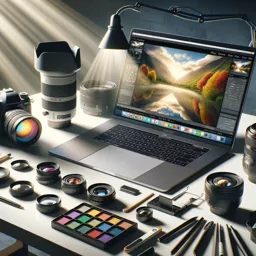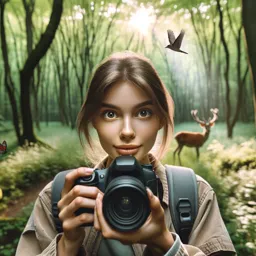Introduction to Macro Wildlife Photography
Macro photography is a fascinating genre that reveals the hidden details of the tiny creatures and intricate features often overlooked in the natural world. Focusing on subjects such as insects, spiders, and dew-kissed petals, macro wildlife photography opens a whole new perspective for nature enthusiasts and photographers alike.
Essential Equipment for Macro Photography
- Macro Lens: Invest in a dedicated macro lens with at least a 1:1 magnification ratio for sharp, lifelike images.
- Tripod: A sturdy tripod reduces camera shake, essential for shooting at high magnifications where even the smallest movement is exaggerated.
- External Flash or Ring Light: Adequate lighting is key, as macro photography often requires smaller apertures, leading to less light hitting the sensor.
- Remote Shutter Release: To prevent additional shake during shooting.
Best Practices and Techniques
- Get Close, But Be Respectful: Approach your subject slowly and be mindful not to disturb or harm it.
- Use Manual Focus: Autofocus may struggle at very close distances, so manual focusing gives more control.
- Focus Stacking: Combine multiple shots at different focus points for an image with maximum depth of field.
- Patience & Observation: Take your time to observe natural behavior to capture unique moments.
- Background Matters: Pay attention to your background for a clean and non-distracting image.
Finding Macro Subjects in Nature
Macro subjects abound in gardens, parks, forests, and even your backyard. Early mornings are ideal, as lower temperatures make insects less active. Dewdrops and soft light also contribute to magical macro scenes.
Ethics in Macro Wildlife Photography
Always respect wildlife and fragile ecosystems. Avoid disturbing nests or habitats and never move or manipulate live subjects for a photo. The welfare of your subject comes first.
Post-Processing Tips
- Enhance sharpness selectively on the subject.
- Use cropping to improve composition but maintain a natural look.
- Adjust colors and contrast to reflect the beauty you witnessed.
Conclusion
Macro wildlife photography is both challenging and deeply rewarding. By mastering the right techniques and showing respect for the natural world, you’ll unlock scenes of breathtaking beauty right under your nose. Grab your camera, slow down, and discover a wondrous world waiting at your feet.
































